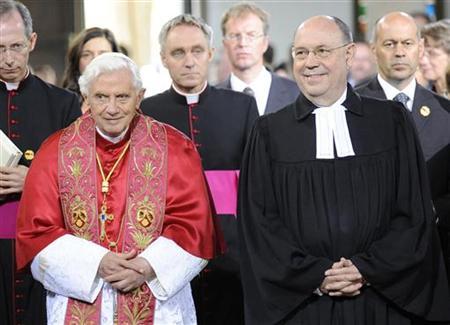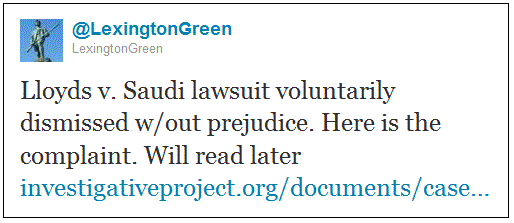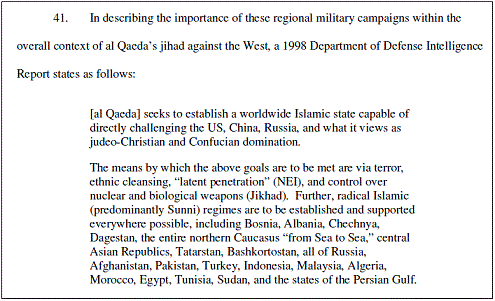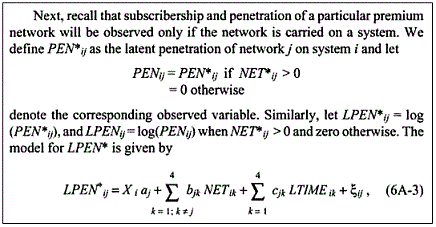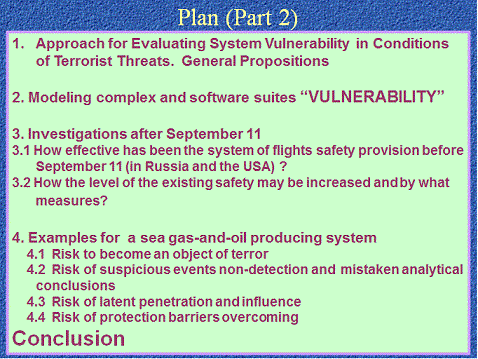R2P is the New COIN: Slaughter on Authority and International Law
Monday, September 26th, 2011Part II.
This is the second part of a series analyzing Anne-Marie Slaughter’s ideas about “Responsibility to Protect” doctrine, based on her Stanford Journal of International Law article, “Sovereignty and Power in a Networked World Order“, to better understand and critique the assumptions on which R2P rests. The topic will be Dr. Slaughter’s uses and conceptualization of “Authority” as it relates to international law and state sovereignty.
Slaughter is particularly concerned with sovereignty and redefining it in international law so that national sovereignty is in harmony with R2P and other au courant academic concepts of “global governance” that are outside the scope of this post. While much of Slaughter’s paper relates to description of empirical trends in the behavior of regulatory bodies in transnational and IGO networks or works of theory, for R2P or “new sovereignty” to be meaningful, it has to be expressed as a legal argument. Furthermore, that legal argument for R2P/new sovereignty must gain acceptance by being expressed by source(s) or forms that a majority of the international community regards as authoritative and binding.
To the unininitiated, international law as a field is something of an intellectual wonderland that bears little resemblance to how positive law functions judicially inside of a sovereign state. First, there is no Hobbesian global leviathan that can enforce international law. The UN is not the “parliament of man” and neither the World Court nor the International Criminal Court can directly compel sovereign states to do anything, and sovereigns retain considerable discretion of interpreting for themselves what international law means and requires them to do or not do. International law theory therefore bears greater resemblance, at times, to mediating theological disputes than it does to the kind of law cases people ordinarily encounter.
International law is most accurately described as a body of competing centers of legal authority that possess varying degrees of legitimacy and that attract voluntary compliance ftom state actors, including: binding international covenants, customary international law, precedent, rulings from internationally sanctioned institutions like the UNSC, the World Court, the WTO or the Red Cross and the consensus of government officials and experts in in international law. These do not all have equal authority or legitimacy – a clause in the Geneva Convention, a UNSC resolution or a concept like “diplomatic immunity” carries more legal weight in international law than an informal but common diplomatic practice or the opinion of a faction of law professors. The ambiguity and heterogeneous nature of international law leaves a lot of room for scholarly debate, litigation, for officials to “shop for opinions” and for ambitious ideologues to push novel theories as allegedly natural extensions of existing jurisprudence.
Slaughter’s legal justification for R2P and redefined sovereignty are in section II. where she leans primarily upon the authority of the ICISS ( International Commission on Intervention and State Sovereignty). As I am examining the ICISS section, I will break up the quoted text with comments:
….On the humanitarian side, Kofi Anana issued a challenge to all UN members at the opening of the General Assembly to “reach consensus – not only on the principle that massive and systematic violations of human rights must be checked, wherever they take place, but also on the ways of deciding what action is necessary, and when, and by whom.” In response to this challenge, the Canadian government, together with a group of major foundations, established the International Commission on Intervention and State Sovereignty (ICISS), headed by former Australian Foreign Minister Gareth Evans and Special Adviser to the UN Secretary General Mohamed Sahoun, and composed of a distinguished group of global diplomats, politicians, scholars and nongovernmental activists….
The ICISS has genuine, but very trivial, legal stature, having been brought into being by a single (!) member state of the UN and some very powerful and wealthy left-liberal American philanthropic foundations including the Carnegie Corporation of New York, the William and Flora Hewlett Foundation, the John D. and Catherine T. MacArthur Foundation, the Rockefeller Foundation, and the Simons Foundation. The governments of the UK and Switzerland also gave financial support to the ICISS. Politically, while the commissioners were prominent center-left statesmen, the ICISS advisory board tilted further to the international Left and toward elite “neoliberal” politicians. The ICISS was approximately as politically and philosophically balanced as would be an international small arms control commission composed entirely of members of the NRA.
The ICISS by itself is thin gruel in terms of legal authority, but has just enough substance to be legitimately served up on the table. Once the foot was in the door, advocates for R2P were, over time, able to get it into the 2005 World Summit Outcome Document (again, relatively minor in itself, but an additional precedent) and, more substantially, into UNSC Resolution 1674. Much like sediment, a new theoretical concept has to lay down legal particulates in order to become a durable and freely recognized part of international law by sovereigns. That kind of autonomous judgment by sovereigns is something R2P advocates would like to sharply curtail.
….In December 2001 the ICISS issued an important and influential report, “The Responsibility to Protect“, which essentially called for updating the UN Charter to incorporate a new understanding of sovereignty.
Dr. Slaughter has a gift for understatement. “Incorporating a new understanding of sovereignty” means irrevocably changing national sovereignty as the term has been traditionally defined and understood. This is not exactly a minor ambition in international relations, which is one reason why I tend to regard Anne-Marie Slaughter as a revolutionary or radical IR theorist and not as a “neoconservative”, as she is sometimes accused of being by left-wing ideologues. Slaughter expounds further:
….The ICISS seeks to change the core meaning of UN membership from “the final symbol of independent sivereign statehood and thus the seal of acceptance into the community of nations” to recognition of a state as a responsible member of the community of nations.” Nations are free to choose or not not to sign the Charter: if they do, however, they must accept “the responsibilities of membership” flowing from their signature. According to the ICISS, “There is no transfer or dilution of state sovereignty. But there is a re-characterization involved: from sovereignty as control to sovereignty as responsibility in both internal functions and external duties.
[emphasis in original]
That’s the kind of “re-characterization” that George Orwell’s Winston Smith regularly undertook in his job at the Ministry of Truth. To where or to whom does the political locus of control then move? Cui bono?( Hint: read Slaughter’s fifth section).
“Sovereignty as responsibility” implies duties or obligations rather than decision making power and, indeed, earlier in section II, Slaughter uses the phrase “conditional social contract” in the introductory paragraph. Slaughter’s ICISS derived social contract however is not Lockean in nature, formed by and with the consent of the governed, but is instead drawn by the state from the collective authority of the community of nations and sovereignty is manifested to the degree with which the state is interactive and interdependent and has “the capacity to participate in international institutions of all types”. A community not just of nations, but one that is extended and buttressed by being interwoven by transnational, quasi-independent, “governmental networks” of former and current politicians and bureaucrats
If you are thinking that this formula shifts political authority and power away from a state and the popular sovereignty of it’s citizens and toward a vaguely defined, supranational community, you would be absolutely correct. Drawing on the theories of Abram and Antonia Chayes, Slaughter, argues that the connectivity and interaction of the modern international system is such that “sovereignty as autonomy makes no sense”.
Such a position requires a healthy contempt for the consent of the governed as well as a childlike faith in the wisdom, integrity and basic competence of a superempowered technocratic elite.
To continue:
….Internally, a government has the responsibility to respect the dignity and basic rights of it’s citizens; externally, it has a responsibility to respect the sovereignty of other states.
Further, the ICISS places the responsibility to protect on both the state and on the international community as a whole. The ICISS insists that an individual state has the primary responsibility to protect individuals within it. However, where the state fails in that responsibility, a secondary responsibility falls on the international community acting through the United Nations. Thus, where a population is suffering serious harm, as a result of internal war, insurgency, repression or state failure, and the state in question is unwilling or unable to halt or avert it, the principle of non-intervention yields to the international responsibility to protect.
As Slaughter is redefining sovereignty as the “new sovereignty” of interactive capacity championed by Chayes and Chayes, “respecting the sovereignty of other states” probably does not mean “non-interference in the internal affairs of other states”. Interference (albeit not necessarily military intervention) might be the natural default position from using the premise of “sovereignty as responsibility” or as a “capacity to participate”. Hey, we aren’t intefering in your elections, your economy or your social system – we’re just “harmonizing” (Slaughter’s term) your laws and regulations and increasing your capacity to participate!
One wonders what aspects of American life that R2P advocates see as being most in need of international harmonization? That’s a subject we can take up in future posts, but in terms of military intervention and R2P, a few comments in regard to international law as well as “capacity to participate”:
First, under current international law, the legitimate pretexts for military intervention largely revolve around the right of self-defense or disturbance of international peace, as recognized by the UNSC. While this is a fairly narrow set of pretexts, in practice they are sufficiently flexible to address most scenarios of violent conflict without also justifying military aggression bent on conquest. What was lacking in Rwanda and the Balkans during the 1990’s were not legal rationales for military intervention but political will among the great powers to do so. I see little evidence that R2P would carry greater moral or legal weight with state decision makers to compel them to undertake major military interventions out of altruism than does the Genocide Convention (which unlike R2P, as an international covenant, is an inarguably solid part of international law). Or, for that matter, the emotional pull of horrifying media imagery of dying children.
Secondly, by greatly broadening the scenarios under which military intervention is allowed under international law, R2P incentivizes such conduct primarily where doing so is inexpensive and will further national interests rather than in the worst cases, like Rwanda, where they are expensive and risky while yielding no tangible benefits. The global military capacity to intervene is finite and instead of doing triage, statesmen will go for the low-hanging fruit in a now much larger set of cases for potential intervention. If R2P were taken seriously, North Korea, Burma, Congo, Somalia, Syria and perhaps Yemen would be ahead in line for intervention before Libya.
Thirdly, in terms of “capacity to participate”, the net global capacity for military intervention is overwhelmingly American and the logistical ability to sustain a major military intervention for more than a few weeks is a complete American monopoly. On pragmatic grounds, R2P will never work orchestrated in so lopsided a fashion of “America and some of the West vs. the Rest”. Nor will not be politically tolerated by either the American public or most of the world’s population. Or by Beijing’s steely-eyed rulers, who would have to bankroll this catalogue of expeditions because America no longer can afford to do so. Perhaps we can put “R2P” on our tin cup and get a better interest rate.
Even acting as benignly-intended peacekeepers, the potential scale of R2P vastly exceeds our will, our wallet and our welcome.
